Supporting Vulnerable and SEND Learners
6th January 2017
Teachers want to do the best they can for vulnerable learners or those with special educational needs or disabilities (SEND).
However it’s not always easy to understand such a complex area. It’s harder still to know what to do in order to help. Hopefully this presentation on ‘Supporting Vulnerable Learners’ which I recently delivered at a National Education Trust conference can help.
It summarises the implications of several of our research projects whilst drawing out implications for schools and teachers. You can download the full presentation here.
-
In “What next for Pushed Out Learners?” we divide our findings into three areas of support that can help vulnerable learners succeed in education.
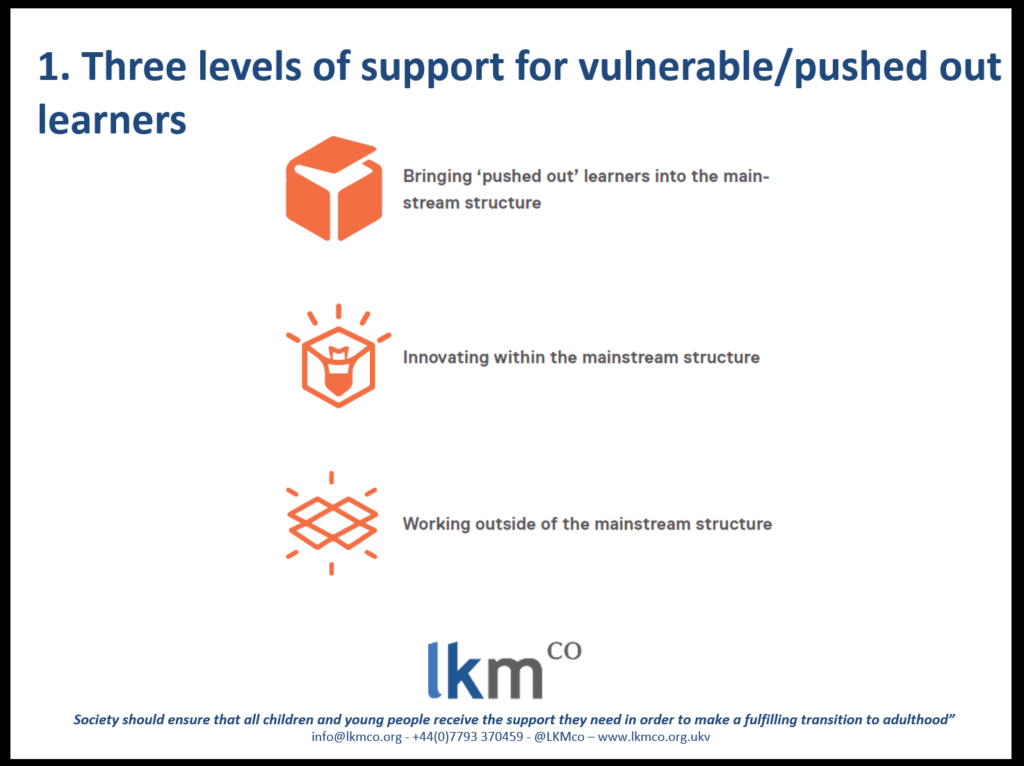
-
First however, we need to think about who is vulnerable or has SEND.
All sorts of groups could fall under these umbrella, whether as a result of being in care, because of mental health issues, poverty or their ethnic characteristics for example. However, it is worth noting some of the most striking trends when it comes to exclusion.
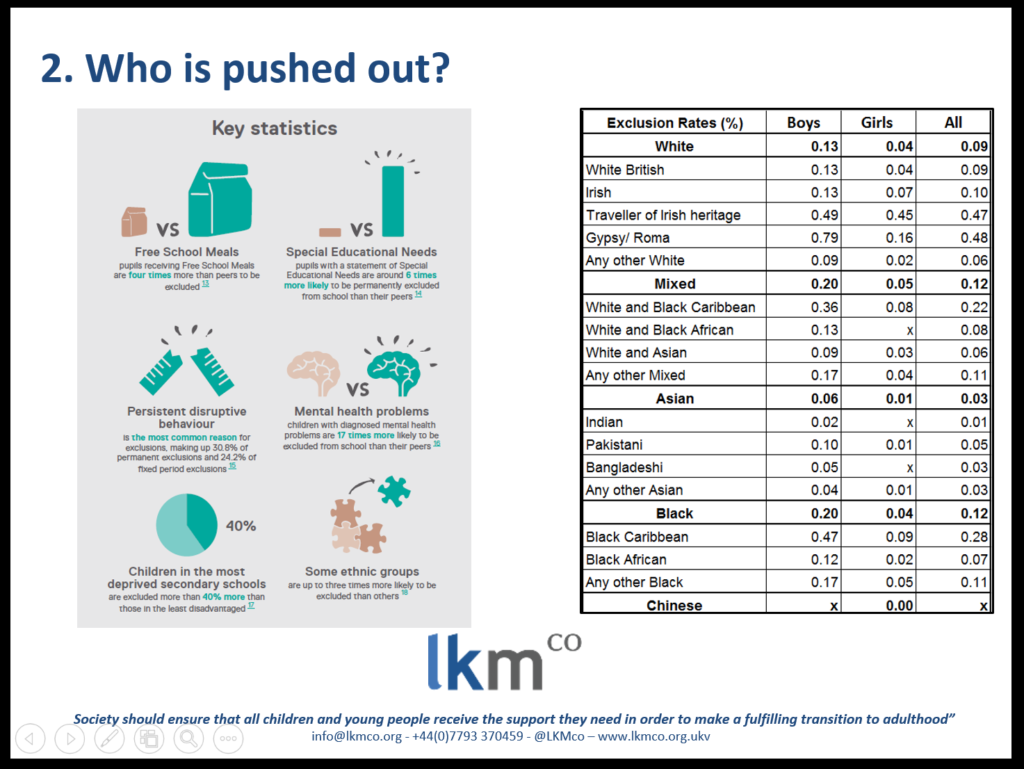
-
There are also myriad reasons why vulnerable learners might be vulnerable
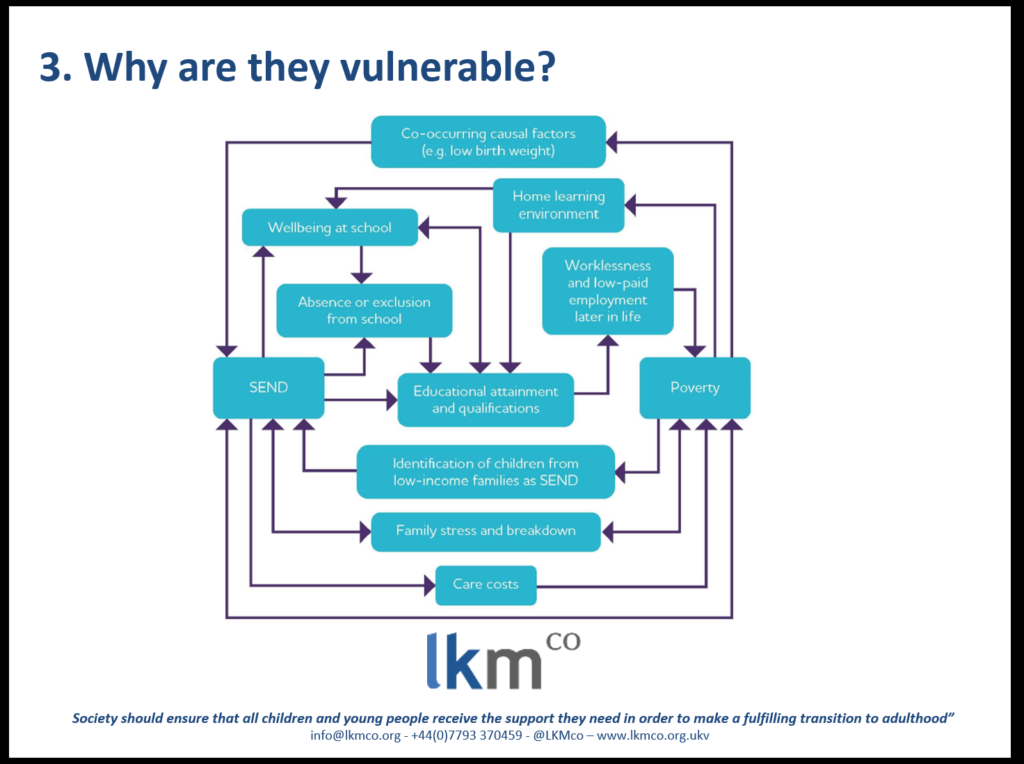
These factors can be broadly grouped into four categories:
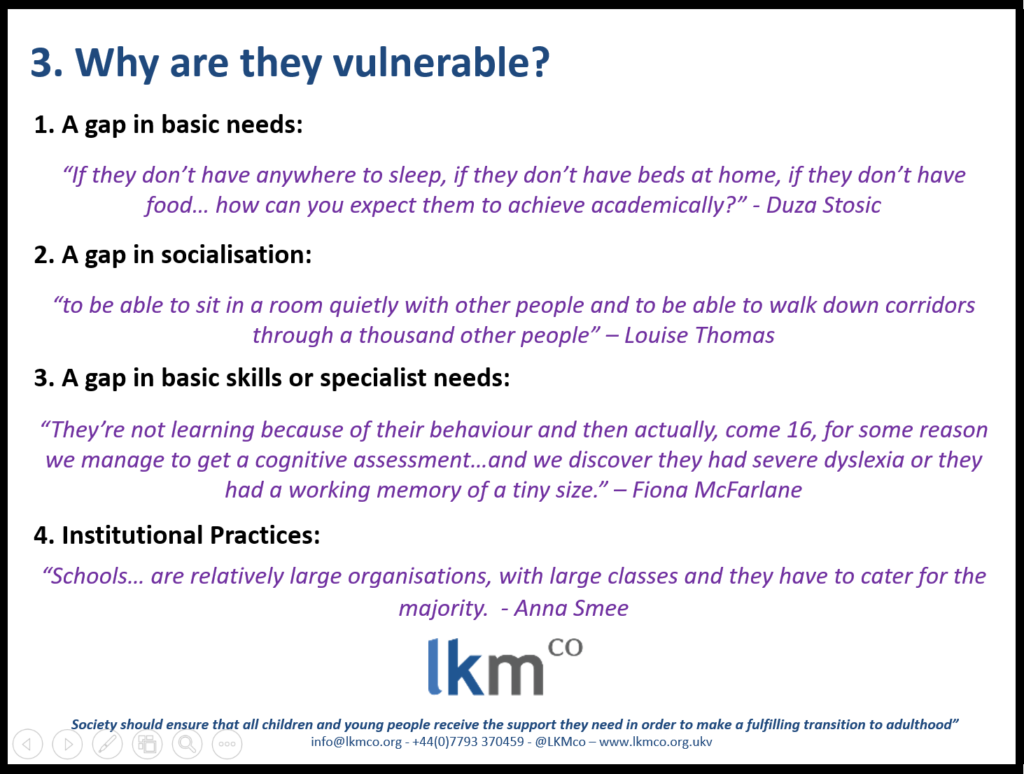
-
So what can we do about it?
Different levels of response are appropriate depending on the cause and the degree of vulnerability.

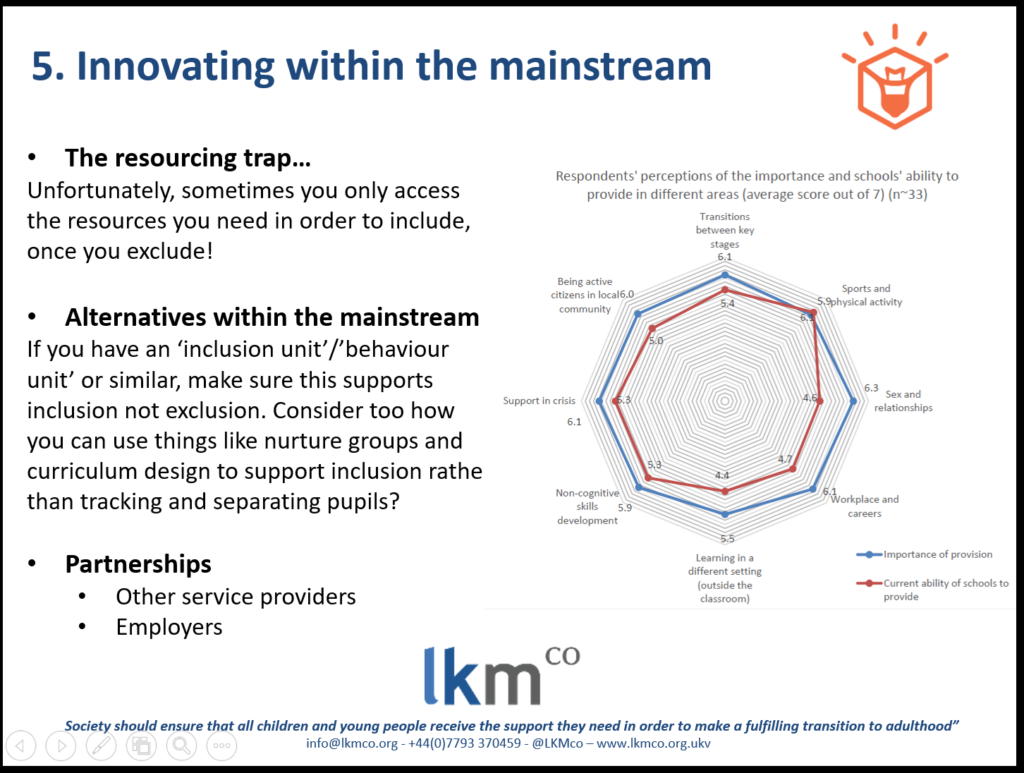
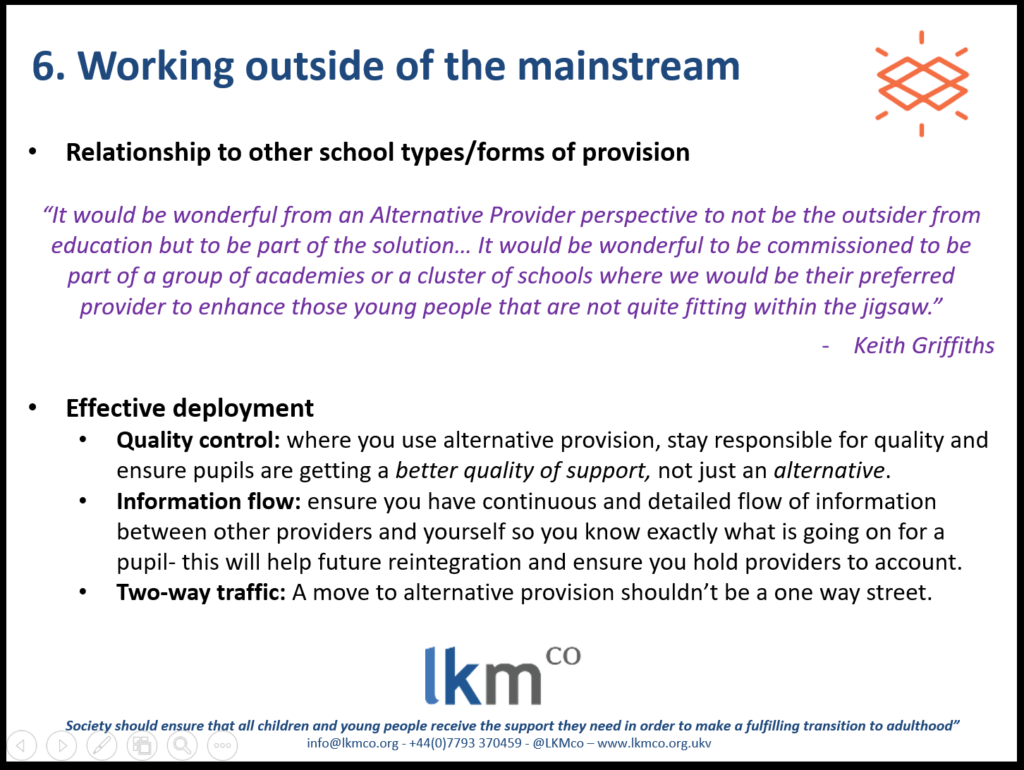
Find out more
We’ve written more about these issues in the following repots and you can download my full presentation here.
- The SEND system:
“Joining the Dots” (with the Driver Youth Trust): http://lkm.li/JoinDots
- Pushed out Learners:
“The Alternative Should not be Inferior” (with the Inclusion Trust): http://lkm.li/PushedOut
- Poverty and SEND:
“Special educational needs and their links to poverty” (with the Joseph Rowntree Foundation): http://lkm.li/SENpov
- Working in Partnership:
A Partnership Worth Building? (with London Youth): http://lkm.li/ClubPartnerships

Comments